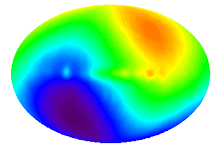Factors at the
commensal-host interface associated with health and disease
Factors at the
commensal-host interface associated with health and disease. Environmental and
host factors (which are under genetic control) determine the composition and
functional consequences of the components within the lumenal milieu. The
lumenal milieu consists of commensal microbiota and their products and secreted
factors of the host (blue). These lumenal states are metastable at any given
point in time and likely age-dependent. Health is associated with symbiosis of
the commensal microbiota and host responses (lumenal, epithelial, and
subepithelial), which are a reflection of homeostasis. Disease on the other
hand is characterized by dysbiosis of the commensal microbiota and the
corollary host responses. Whether symbiosis or dysbiosis is a primary or
secondary factor in disease development remains an open question. The ultimate
development of disease at any given set point in this model is dependent on
many factors, which determine tissue tolerance and include genetic
susceptibility among others. GPCR43, G protein–coupled receptor 43; PSA,
polysaccharide antigen A; Treg, T regulatory cell; ER, endoplasmic reticulum;
wt, wild-type allele; mut, mutant allele; TMA, trimethylamine; Th, T helper;
IL, interleukin; TGFβ, transforming growth factor–β; IFNγ, interferon-γ; iNKT,
invariant natural killer T.

沒有留言:
張貼留言